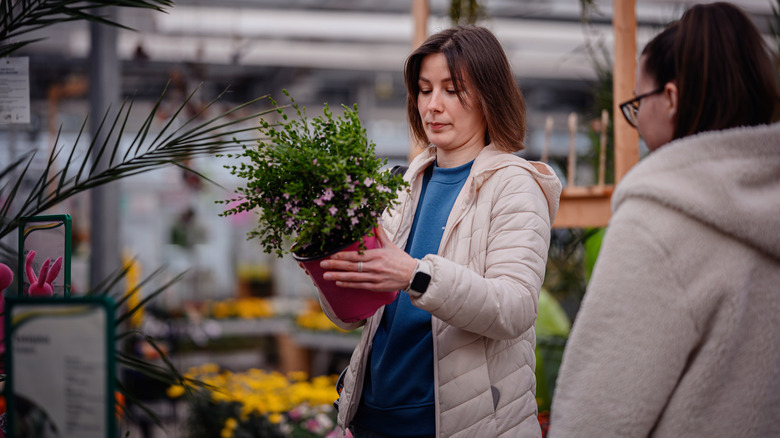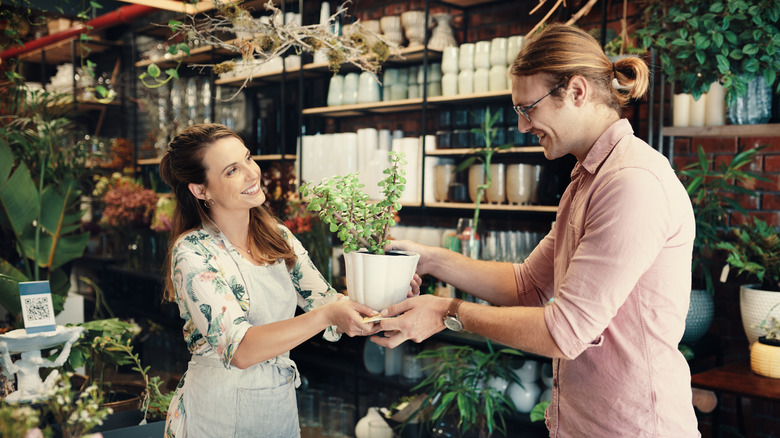Double Check The Pot Whenever You Buy Plants At A Nursery
Have you ever picked up a nice-looking plant at the garden center or nursery and found roots sticking out of the drainage hole at the bottom? Whether or not you take a chance on this type of plant, the protruding roots represent two possible issues that put the plant at risk. The excessive roots may indicate that the pot is the wrong proportion for the plant (too small) or the plant has been in the pot too long.
Either way, this situation calls for a closer inspection of the root system. Pulling the plant gently out of the pot at the garden center is perfectly acceptable and will reveal any signs of trouble (read on for how to do that). For example, roots wrapped in a circle around the pot indicate girdling, a situation in which nutrient intake to the plant is restricted due to lack of space. Crowded roots in a disproportionately small container may also result in a higher soil temperature.
How much does pot size matter? Quite a bit, it turns out. While there are hidden dangers of using a pot that's too big for your plant, pots that are too small are usually worse. Washington State University horticulturalist Linda Chalker-Scott has researched pot size and concluded, "Almost without exception, you get better growth on plants grown in larger containers, whether you're measuring height, number of leaves, leaf area, stem diameter, shoot and root dry and fresh weights, whole plant dry and fresh weight ... " Chalker-Scott notes that a larger root zone supports more roots and more growth above ground.
Give nursery pots a closer inspection if roots protrude from the pot
For economic reasons, nursery plant producers tend to plant their products in smaller containers than the plants' needs; that way, they can produce more plants in the same amount of space. But that can result in restricted roots. You could also run into the opposite problem. Since container size typically determines plant price, one of the most significant issues with plants in disproportionately large pots is the poor value — you're paying for more than you're getting (unless you were hoping to gain extra potting soil).
Let's look at how to inspect those roots in a typical 1-gallon container. Hold your hand over the surface of the soil, grasping the stem of the plant with a couple fingers. Then tip the plant upside down and slip the pot off. Look for roots that are white and firm as opposed to brown and spongey. Check for girdling or spiraling roots. Deploy additional tips for choosing the healthiest plants when buying from a nursery, such as checking for root damage or breakage.
Should you take a chance on a plant that shows signs of root issues at the nursery? It's possible you could rehab the plant through re-potting or transplanting, but it may be better to bypass this plant, especially if it has other issues, as well. After all, protruding roots aren't the only problems you should inspect for; look for issues like compacted soil or dry leaves. Increase your chances of finding healthy plants in proportionately sized pots by shopping at big box retailers with the best houseplants that are worth buying.

